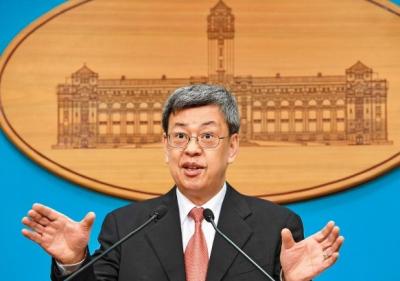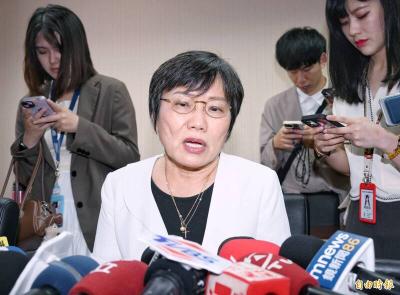An academic analysis concludes the “pivot” or “rebalance” in US relations with the Asia-Pacific region has generally overlooked Taiwan.
Beginning in 2008, Chinese and US leaders have agreed with President Ma Ying-jeou’s (馬英九) reversal of Taipei’s past intense competition with China in favor of policy reassuring Beijing, it says.
The analysis, titled Balancing Acts: The US Rebalance and Asia-Pacific Stability, was published this week by the George Washington University’s Sigur Center for Asian Studies.
In the view of Chinese and US leaders, the past five years of stability and growing exchanges across the Taiwan Strait stand “in favorable contrast” with repeated crises in the previous decade, the analysis says.
“Today, Taiwan remains an exception to the turmoil along China’s eastern rim, in the Korean Peninsula, and the East China Sea and the South China Sea,” it says.
It says that neither Beijing nor Washington nor Taipei sees their interests served by new tensions in cross-strait relations.
“Against this background, the US rebalance has generally avoided explicit reference to Taiwan,” the analysis says.
It quotes Ma as telling US National Security Adviser James Jones in June last year that Taiwan not only welcomed the rebalancing, but also hoped to further strengthen its interaction with the US on the economic, trade, security and cultural fronts.
“But Taiwan has not strongly associated with the rebalance,” the analysis says.
Because Taiwan has the same claims as China to disputed territories in the East China Sea and the South China Sea, it has adopted “sometimes confrontational” policies toward Japan and South China Sea disputants.
These policies “exacerbate tensions and work against US efforts to calm regional tensions,” the analysis says.
The 50-page report was written by four George Washington University faculty members: Robert Sutter, Michael Brown, Mike Mochizuki and Deepa Ollapally, and a student, Timothy Adamson.
“Although commentators in China and some observers elsewhere have suggested that the rebalance was designed to contain China, this is a simplistic reading of the new policy,” the analysis says.
“In geostrategic terms, the rebalance is the [US President Barack] Obama administration’s grand strategy for US foreign policy,” it says.
According to the analysis, the rebalance has more promise for advancing US interests, especially economic interests, than US policy efforts in most other parts of the world. Looking at the prospects for US-China relations, the analysis says that “a happy ending is possible,” but not guaranteed.
The new US policy is based on the need for strategic reassurance in the face of a rising and increasingly assertive China, it says.
“The rebalance is also driven by a desire to reassure US allies, friends, and other countries in the region that the US has not been exhausted after a decade of war, that it has not been weakened by economic and political problems at home and that it is not going to disengage from Asia-Pacific affairs,” it says.
According to the analysis, Obama is himself a “driving force” behind the rebalance. As a result, recent changes in the staff of the US National Security Council will not have “significant impact” on the new policy.
Looking ahead, the analysis says, it remains to be seen if China can sustain a more moderate stance toward US policy.
“China remains deeply skeptical of the rebalance, although Beijing has been somewhat eased by Washington’s attempts to provide reassurances over US intentions and its emphasis on the diplomatic, rather than the military elements of the new policy,” it says.

Taiwan would welcome the return of Honduras as a diplomatic ally if its next president decides to make such a move, Minister of Foreign Affairs Lin Chia-lung (林佳龍) said yesterday. “Of course, we would welcome Honduras if they want to restore diplomatic ties with Taiwan after their elections,” Lin said at a meeting of the legislature’s Foreign Affairs and National Defense Committee, when asked to comment on statements made by two of the three Honduran presidential candidates during the presidential campaign in the Central American country. Taiwan is paying close attention to the region as a whole in the wake of a

President William Lai (賴清德) has appointed former vice president Chen Chien-jen (陳建仁) to attend the late Pope Francis’ funeral at the Vatican City on Saturday on his behalf, the Ministry of Foreign Affairs said today. The Holy See announced Francis’ funeral would take place on Saturday at 10am in St Peter’s Square. The ministry expressed condolences over Francis’ passing and said that Chen would represent Taiwan at the funeral and offer condolences in person. Taiwan and the Vatican have a long-standing and close diplomatic relationship, the ministry said. Both sides agreed to have Chen represent Taiwan at the funeral, given his Catholic identity and

Chinese Nationalist Party (KMT) Chairman Eric Chu (朱立倫), spokeswoman Yang Chih-yu (楊智伃) and Legislator Hsieh Lung-chieh (謝龍介) would be summoned by police for questioning for leading an illegal assembly on Thursday evening last week, Minister of the Interior Liu Shyh-fang (劉世芳) said today. The three KMT officials led an assembly outside the Taipei City Prosecutors’ Office, a restricted area where public assembly is not allowed, protesting the questioning of several KMT staff and searches of KMT headquarters and offices in a recall petition forgery case. Chu, Yang and Hsieh are all suspected of contravening the Assembly and Parade Act (集會遊行法) by holding

Lawmakers from the Democratic Progressive Party (DPP) yesterday established a friendship group with their counterparts in Ukraine to promote parliamentary exchanges between the two countries. A ceremony in Taipei for the Taiwan-Ukraine Parliamentary Friendship Association, initiated by DPP Legislator Chen Kuan-ting (陳冠廷), was attended by lawmakers and officials, including Deputy Minister of Foreign Affairs Francois Wu (吳志中) and European Economic and Trade Office in Taiwan Director Lutz Gullner. The increasingly dire situation in Ukraine is a global concern, and Taiwan cannot turn its back when the latter is in need of help, as the two countries share many common values and interests,